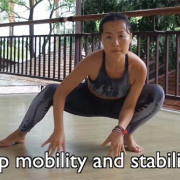 https://samahitaretreat.com/wp-content/uploads/2019/12/Paul-TRX-NL.jpg
512
1000
Sarah Pierroz
http://samahitaretreat.com/wp-content/uploads/2024/01/samahita-logo-v2.svg
Sarah Pierroz2019-12-20 05:16:182024-02-15 09:33:113 Tips to get More from Your Workout
https://samahitaretreat.com/wp-content/uploads/2019/12/Paul-TRX-NL.jpg
512
1000
Sarah Pierroz
http://samahitaretreat.com/wp-content/uploads/2024/01/samahita-logo-v2.svg
Sarah Pierroz2019-12-20 05:16:182024-02-15 09:33:113 Tips to get More from Your WorkoutHow High & Low Intensity Exercise Effect Cognition and Mood
Sometimes we have only a few minutes to get into and use the body, where we can get out for a run, walk, hike, cycle. We may feel as though we are too busy, or focused on a task, but those few minutes can help brain functioning in the long run. New research shows that regular exercise improves cognitive function. Another recent study shows that how intensely we dive into that activity actually effects different parts of our brain. If you are going to run, do you pace yourself consistently? Or work rest in between bursts of sprints? Curious? Read more….
“Individuals assigned to the active training program significantly improved their cardiorespiratory fitness, spent more time being physically active after the training program ended, and performed better on cognitive tests of executive functioning.”
More Reasons to Move!
In a recent publication of the Journal of Brain Plasticity, Gaitán and his researcher team found that regular aerobic exercise favourably improves cognitive function and improved brain glucose metabolism and cognition in asymptomatic, late-middle-aged adults, with a family history or genetic risk for Alzheimer’s Disease. These 23 participants mostly lead a sedentary life. Half of the group only received information about maintaining a healthy lifestyle, while the other half had a personal training session, using a moderate-intensity treadmill training program, three times per week for 26 weeks. The researchers monitored each person’s cardiorespiratory fitness testing, daily physical activity, brain glucose metabolism imaging, and cognitive function tests. Compared to those maintaining their usual level of physical activity, individuals assigned to the active training program significantly improved their cardiorespiratory fitness, spent more time being physically active after the training program ended, and performed better on cognitive tests of executive functioning, which is the ability to plan, focus attention, remember specific instructions, and multi-task successfully. Their findings were in accordance with similar, previous aerobic exercise interventions on cohort with normal cognition (1). So the more you exercise, the more you enhance and protect brain and cognitive function…all the more reason to move!
“Low-intensity exercise triggered areas of the brain associated with cognition control and focusing attention. And interestingly, high-intensity exercise activated networks involved with emotional processing.”
High or Low Intensity Exercise?
A new study published in the Journal of Brain Plasticity, in December 2019, reported for the first time that different intensity levels of running affect different areas of our brain functioning. Angelika Schmitt and her colleagues investigated the individual performance of twenty-five male athletes on incremental treadmills. On separate days, the athletes performed ‘low’ (35% below lactate threshold) and high (20% above lactate threshold) intensity exercise regimes for 30 minutes. The lactate threshold is a measurement which indicates the level of physical activity at which your body begins to fatigue, when lactate begins to accumulate in the blood faster than it can be removed. The researchers then measured the participants’ resting state functional magnetic resonance imaging (Rs-fMRI) to see which areas of the brain connective network were triggered when the runners had to perform specific task or tests.
The team found that low-intensity exercise triggered areas of the brain associated with cognition control and focusing attention. And interestingly, high-intensity exercise activated networks involved with emotional processing. So, it may be that you need to channelize your mental energy on a larger task or project, then you should slow down the intensity of your cardio, and if you are feeling more emotional or reactive, then it may be time to increase and push yourself a bit more in your exercise. Regardless of the level of activity, after both exercise conditions, the participants revealed a significant increase in positive mood(1). So, sometimes it’s good to just move to elevate how you feel. Even if your body or mind may be telling you the opposite message.
So, if you have even twenty minutes a day to move, either fast or slow. You can help to trigger more than muscle function. You can get help to enhance your overall brain health, and if your rev up the intensity, tone your emotional state, or slow it down to increase your ability to focus. All, more reasons to move and to consider how we move.
(1)
“Brain Glucose Metabolism, Cognition, and Cardiorespiratory Fitness Following Exercise Training in Adults at Risk for Alzheimer’s Disease”. Ozioma C. Okonkwo et al. Brain Plasticity doi:10.3233/BPL-190093.
(2)
“Modulation of Distinct Intrinsic Resting State Brain Networks by Acute Exercise Bouts of Differing Intensity”. Angelika Schmitt et al. Brain Plasticity doi:10.3233/BPL-190081.
More from the Samahita Blog







